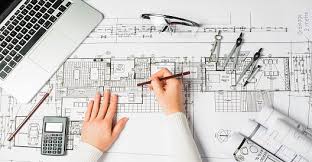
Structural drafting is a critical aspect of construction and architectural design, involving the creation of detailed drawings and plans that guide the building process. These drawings serve as the backbone of infrastructure projects, translating complex ideas into tangible, buildable formats. Traditionally, structural drafting was performed manually, but with advancements in technology, digital drafting has become the standard for many professionals. While both methods have their own merits, understanding their respective pros and cons can help businesses and individuals make informed decisions.
Manual Structural Drafting
Manual drafting refers to the process of creating technical drawings by hand, using tools like pencils, rulers, compasses, and drafting boards. This traditional approach has been the foundation of engineering and architectural design for centuries.
Pros of Manual Drafting
-
Artistic Skill and Precision
-
Manual drafting requires a high level of skill and craftsmanship. Drafters develop a deep understanding of line weights, scale, and proportion, which often leads to highly detailed and precise drawings.
-
-
Tactile Feedback
-
Working by hand allows for tactile interaction with the materials, which can be beneficial for conceptualizing and refining complex structures.
-
-
No Technical Barriers
-
Manual drafting does not rely on software or electronic devices, making it accessible even in areas where digital tools are not available or reliable.
-
-
Custom Creativity
-
Artists and designers often find more room for spontaneous creativity in manual drafting, especially during the conceptual or preliminary design phases.
-
Cons of Manual Drafting
-
Time-Consuming
-
Creating, modifying, and reproducing manual drawings can be extremely time-consuming compared to digital processes.
-
-
Prone to Human Error
-
Manual drawings can suffer from inconsistencies or mistakes, which may not be immediately apparent until later stages of the project.
-
-
Storage and Sharing Challenges
-
Physical drawings require large storage spaces and are difficult to duplicate or share quickly, especially in collaborative or remote work environments.
-
-
Lack of Integration
-
Manual drafts cannot easily integrate with modern technologies like Building Information Modeling (BIM) or computer-aided simulations.
-
Digital Structural Drafting
Digital drafting uses software like AutoCAD, Revit, Tekla Structures, or MicroStation to create, edit, and manage structural drawings on computers or tablets. This method has rapidly become the industry standard.
Pros of Digital Drafting
-
Speed and Efficiency
-
Digital tools allow for rapid creation and easy modification of drawings. Features like templates, layers, and object libraries significantly accelerate the drafting process.
-
-
Accuracy and Consistency
-
CAD software provides precision tools that help eliminate many of the common errors found in manual drafting. It ensures that dimensions, angles, and scales are accurate and consistent.
-
-
Ease of Collaboration
-
Digital files can be shared instantly across teams, enabling real-time collaboration. Cloud-based platforms make it possible for multiple stakeholders to access and edit drawings simultaneously.
-
-
Integration with Other Technologies
-
Digital drafting integrates well with BIM, structural analysis software, and project management tools, facilitating a more comprehensive and connected workflow.
-
-
Easy Revisions and Versions
-
Making revisions is straightforward, with digital drafts allowing easy tracking of changes and multiple version management without redrawing the entire project.
-
Cons of Digital Drafting
-
Learning Curve and Training
-
Mastering CAD software requires training, and the complexity of some programs can be a barrier for beginners or those transitioning from manual methods.
-
-
Initial Cost
-
Investing in software licenses, hardware, and training can be expensive, particularly for small firms or individual freelancers.
-
-
Dependence on Technology
-
Digital drafting is reliant on electricity and functioning hardware. Technical issues, software bugs, or data loss can disrupt workflow.
-
-
Reduced Artistic Flexibility
-
While precise, digital tools may limit the creative and expressive freedom that some designers experience with manual drafting.
-
Choosing the Right Method
The choice between manual and digital structural drafting depends on several factors, including the project’s complexity, available resources, desired turnaround time, and the nature of the collaboration involved. In many modern practices, a hybrid approach is often used—initial sketches and ideas may be drafted by hand and later refined using digital tools.
Manual drafting is ideal for educational purposes, artistic renderings, and small-scale projects where the tactile process aids creativity. It can also be beneficial in settings with limited access to digital infrastructure.
Digital drafting, on the other hand, is better suited for large, complex, and collaborative projects where speed, accuracy, and integration with other digital systems are crucial. It is the preferred method for professionals aiming to meet industry standards and keep up with modern construction and engineering demands.
Conclusion
Both manual and digital Structural Drafting Services have their own unique advantages and limitations. Manual drafting offers an intimate, hands-on approach that enhances artistic expression and precision through skill, while digital drafting provides efficiency, accuracy, and scalability through advanced technology. The decision ultimately depends on the project’s specific requirements and the expertise of the drafting team. In a world increasingly driven by technology, digital drafting continues to dominate the industry—but manual drafting still holds a respected place in the foundation of design education and creativity.





